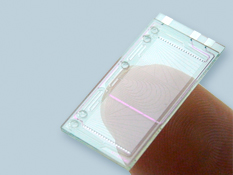Quantitative Profiling
Instrument and process independent binning and baseline correction methods for LC-HR-MS deconvolution
Setting appropriate bin sizes to aggregate hyphenated high-resolution mass spectrometry data, belonging to similar mass over charge (m/z) channels, is vital to metabolite quantification and further identification. In a high-resolution mass spectrometer when mass accuracy (ppm) varies as a function of molecular mass, which usually is the case while reading m/z from low to high values, it becomes a challenge to determine suitable bin sizes satisfying all m/z ranges.
Discovery of early-stage biomarkers for diabetic kidney disease using ms-based metabolomics (FinnDiane study)
Diabetic kidney disease (DKD) is a devastating complication that affects an estimated third of patients with type 1 diabetes mellitus (DM). There is no cure once the disease is diagnosed, but early treatment at a sub-clinical stage can prevent or at least halt the progression. DKD is clinically diagnosed as abnormally high urinary albumin excretion rate (AER). We hypothesize that subtle changes in the urine metabolome precede the clinically significant rise in AER. To test this, 52 type 1 diabetic patients were recruited by the FinnDiane study that had normal AER (normoalbuminuric).
Quantitative profiling


Analytical strategies in lipidomics and applications in disease biomarker discovery
Mesenchymal stem cells induce resistance to chemotherapy through the release of platinum-induced fatty acids
The development of resistance to chemotherapy is a major obstacle for lasting effective treatment of cancer. Here, we demonstrate that endogenous mesenchymal stem cells (MSCs) become activated during treatment with platinum analogs and secrete factors that protect tumor cells against a range of chemotherapeutics.
Single-electrolyte isotachophoresis using a nanochannel-induced depletion zone
Isotachophoretic separations are triggered at the border of a nanochannel-induced ion-depleted zone. This depletion zone acts as a terminating electrolyte and is created by concentration polarization over the nanochannel. We show both continuous and discrete sample injections as well as separation of up to four analytes. Continuous injection of a spacer compound was used for selective analyte elution.
Parameter selection for peak alignment in chromatographic sample profiling: objective quality indicators and use of control samples
In chromatographic profiling applications, peak alignment is often essential as most chromatographic systems exhibit small peak shifts over time. When using currently available alignment algorithms, there are several parameters that determine the outcome of the alignment process.
Untargeted metabolite discovery in kinetic data from multi-dose intervention studies
A new strategy for biomarker discovery is presented that is based on multi-dose kinetic metabolomics data. Gas chromatography-mass spectrometry (GC-MS) data sets recorded in the full scan mode are scanned for compounds showing a meaningful trend following the different doses and sampling time points. From a biological point of view, a meaningful trend denotes a compound that responds similarly at all doses and follows a smooth trend along the time points. This type of information can be used to distinguish relevant metabolites from those compounds not following the expected trends.
Trend analysis of time-series data: a novel method for untargeted metabolite discovery
A new strategy for biomarker discovery is presented that uses time-series metabolomics data. Data sets from samples analysed at different time points after an intervention are searched for compounds that show a meaningful trend following the intervention. Obviously, this requires new data-analytical tools to distinguish such compounds from those showing only random variation. Two univariate methods, autocorrelation and curve-fitting, are used either as stand-alone methods or in combination to discover unknown metabolites in data sets originating from target-compound analysis.